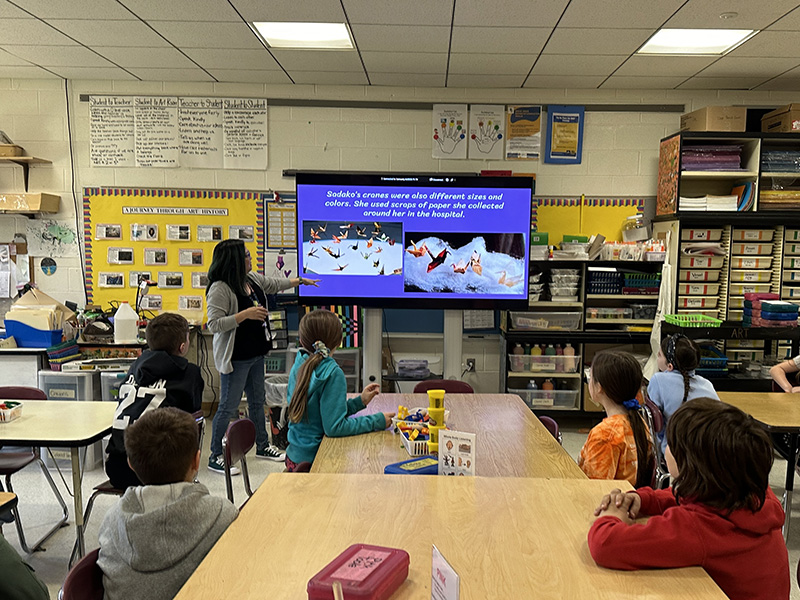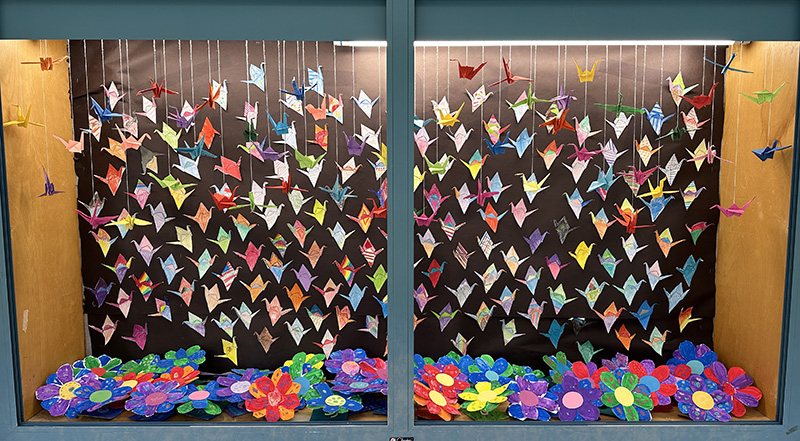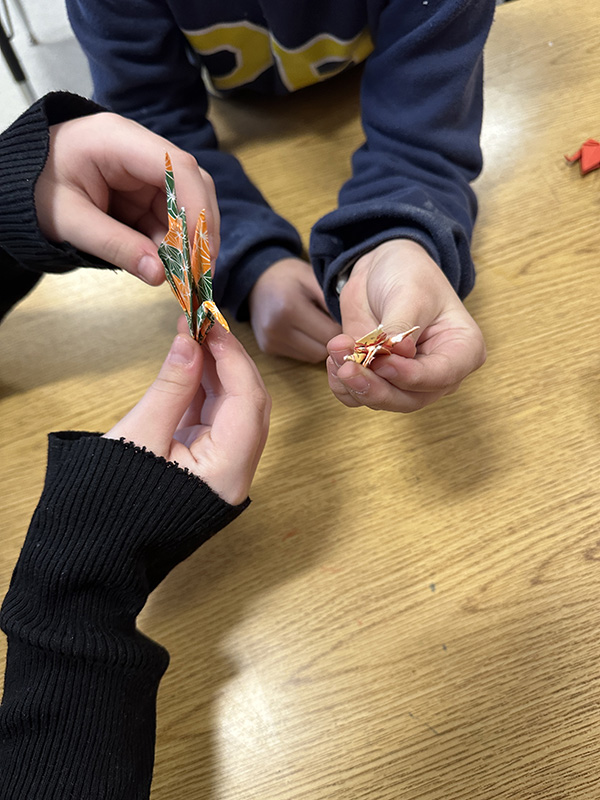Fourth grade students at Pine Bush Elementary School learned about Sadako Sasaki and the Thousand Paper Cranes in Vanessa Storey’s library class. (See more below)
Tisha Foddrill came into the art room to give a presentation about her first-hand experience visiting the Children’s Peace Memorial in Hiroshima, Japan and the history of origami cranes. In Lisa Poquette’s art class, fourth graders each learned how to fold paper cranes. They made two, one to keep and one to put on display.

Second grade students learned about the artist Yayoi Kusama in Ms. Poquette’s art class and in Mrs. Storey’s library class. Students created polka dotted paper flower sculptures inspired by the artist.
The second and fourth graders combined their artwork to create a collaborative display for the whole school to see for Asian American and Pacific Islander Heritage Month in May!

The tradition of the Japanese orizuru (ori– “folded,” tsuru “crane”), or paper crane, began in feudal Japan (1185–1603 CE), when people gifted each other the paper figures as symbols of honor and loyalty. It is depicted in art, literature, and mythology as a symbol of good luck and longevity. An ancient Japanese legend promises that when you fold a thousand origami cranes, you will be granted a wish.

According to MyModernMet.com, when Sadako Sasaki was two years old, she was exposed to radiation from the atomic bomb that devastated Hiroshima in 1945. By the time she was 12, the radiation exposure had developed into leukemia, and she was given just one year to live. The young girl began making 1,000 paper cranes in the hopes of being granted her wish to recover from her illness. However, as time went on and her collection of origami cranes grew, her goal changed. Sasaki decided to wish for world peace instead of her own life. As her condition worsened, she never stopped making paper cranes and her classmates even joined in to help her. After she passed away, she was buried with a wreath of 1,000 paper cranes, and she became a symbol of peace and love. Sasaki is now forever memorialized at Hiroshima Peace Park, where a statue of her holding a giant crane—called the Children’s Peace Monument—stands.
